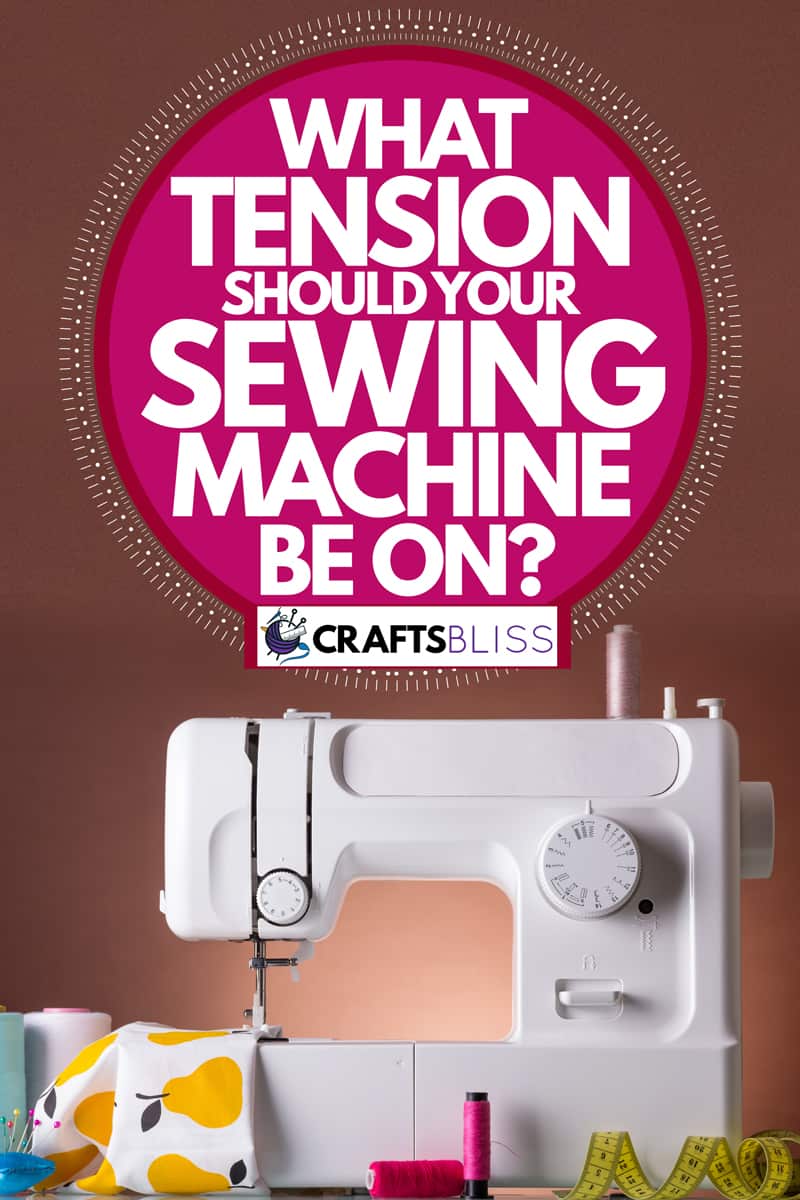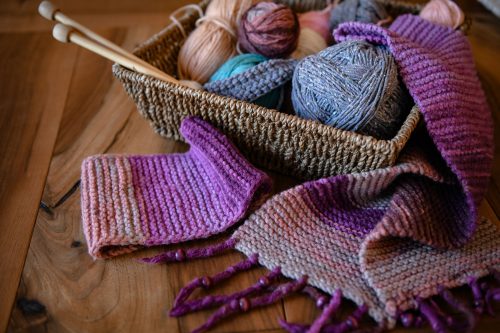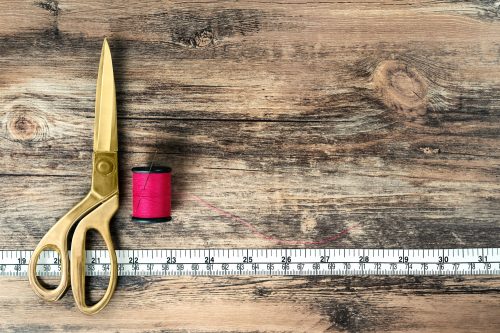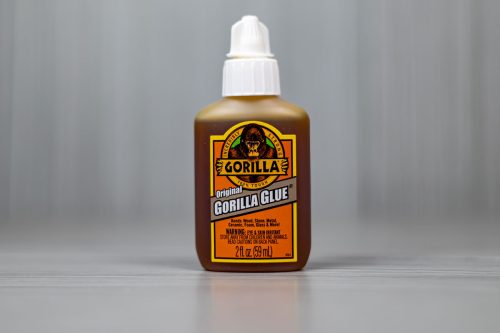Many variables affect stitch quality, from thread to the needle to threading. But one aspect that eludes even some advanced sewers is tension. How do you know what tension your machine should be set to? We have researched this topic to find out.
Most sewing machines have tension dials that run from 0 to 9. So for normal projects and standard stitches, your sewing machine's tension should be 3, 4, or 5. 4.5 is usually ideal, but some machines may not have that option.
Let's take a closer look at what sewing machine tension is and how you can troubleshoot.

What is Sewing Tension?
Both bobbin (bottom) and needle thread tension (top) impact the quality of your stitch. In general, when discussing tension with sewing machines, needle tension is what is being discussed. While bobbin tension is a factor that can also be adjusted, it normally does not need to be.
Tension boils down to how much thread is allowed for each stitch. Loose tension allows more thread, and tight tension allows less.
If your sewing machine tension is good, your stitches will look normal. However, if the stitch starts to look off, it is a sign that you need to adjust the tension. This happens most often when working with different fabrics.
If you are working with the same fabric, you should not have to adjust your tension unless your machine is broken. Most projects will be the same or a similar tension from start to finish.
For example, if you are making a quilt top doing a straight stitch on the same fabric, your tension should not change. However, if you are making a flannel shirt and sewing thick layers, you may need to adjust the tension during the course of that project.
Bobbin Tension
If you have a drop-in bobbin you should almost never have to adjust your bobbin tension. With other styles of bobbins you may have to occasionally adjust your bobbin tension, but not often.
If you are worried about adjusting your bobbin tension, make sure to seek a ">specific guide for it. Ideally, find a guide that is focused on the specific kind of bobbin you have. They will most likely have the best advice for your specific situation.
When should I adjust the tension on my sewing machine?
When moving to a new project you may need to adjust your tension. However, if you are working on the same kind of fabric, you usually will not have to.
The beginning of a project is the best time to evaluate the needed tension.
The other instance when you are adjusting tension would be if you realize you are having some problem with your tension.
The first thing you should do if you suspect you have a tension problem is rethreading your needle. If your needle is not threaded correctly, your tension will not be correct.
Once you have rethreaded, if you still have problems, check over your machine and make sure everything is in working order. Then ask yourself a few questions.
Ask yourself:
- Is the needle the correct size?
- Did you thread your needle properly?
- Are the needle and bobbin in good condition?
Once you have answered all the questions and still think you need to adjust your tension, run a thread tension test.
Thread Tension Test
A thread tension test is simply sewing a few stitches and evaluating where the trouble is.
The best way to do a tension test is to have one color for the top thread and another for the bottom. This allows you to spot problems more easily. However, it is possible to use the same thread for both and still spot tension problems.
While there is not a specific number of stitches you need to do, five to ten stitches is a good starting point. Just make sure you have enough to evaluate the tension properly.
Use the same fabric for your tension test as you will be using in the project. This will ensure that you will not have to adjust your tension more as you begin working on your project.
Troubleshooting Tension
After going through all these steps, then it is time to adjust your tension.
Tight tension is usually the more obvious of the two. If your tension is too tight, the bottom thread may be pulled up to the fabric's top. The stitch may also look strange and cause the fabric to bunch up.
If you suspect your thread tension is too tight, loosen it by switching to a lower number on the dial. There is an easy way to remember to go to a lower number to loosen your tension. Remember that both lower and loosen start with the letter "L."
If your tension is loose, the top of the stitch will usually look fine. However, if you turn your work over, the bottom stitch may look messy.
If your thread tension is too loose, tighten it. To tighten it, switch to a higher number on the dial. We don't have a trick for remembering that, but if you remember lower to loosen, you will be in good shape.
When adjusting your tension, try going up or down by one number at a time.
What tension should I use for thick fabric?
For most thick fabrics, a tension of 4 or 5 will be ideal.
However, for bulk or stretchy fabrics like fleece, you may want to lower the tension. Lowering the tension may help reduce how much the fabric shifts. In this case, a tension of 3 is suitable.
Which sewing machines have automatic tension?
Despite having a machine with automatic tension, make sure you still keep an eye on your stitches and know how to adjust to get the best possible stitch.
When evaluating a machine with automatic tension, make sure to double-check the reviews. Some machines with automatic tension mess up.
In most cases, it is best to learn how to manually adjust the tension rather than buying a machine that does it for you. Make sure you weigh the pros and cons before buying a sewing machine with automatic tension.
Click here to see this sewing machine on Amazon.
Most of the time when looking for a machine with automatic tension that is reliable you will need to invest a fair amount of money. However, there are a few sewing machines on the market with automatic tension that are affordable.
If you are looking for a non-specialty sewing machine that features automatic tension, the Singer Style is an affordable option.
Is There a Sewing Machine that Threads Itself?
Yes! Many sewing machines thread themselves in one way or another. Many new sewing machine models are self-threading. Let's take a look at a few self-threading machines that really stand out from the crowd.
The Singer Heavy Duty 4423 lives up to its name. This machine can work on an array of fabrics and comes with 23 stitch options.
Click here to see the Singer Heavy Duty 4423 on Amazon.
The Singer Simple is practical and straightforward, making it a great beginner sewing machine. If you are getting this machine, double-check that the packaging says it is the self-threading model.
Click here to see this product on Amazon.
The Brother CS5055PRW Project Runway Sewing Machine features a handy automatic threader and an easy drop-in bobbin.
Click here to check this sewing machine out on Amazon.
Further Reading
Interested in learning more about sewing and sewing machines? Check out these other informative posts!
How Much Does A Sewing Machine Cost?
8 Best Sewing Machine Oils [Incld. Safe Alternatives To Sewing Machine Oil]








![Read more about the article Can You Glue Fabric To Leather? [Products & Steps Included]](https://craftsbliss.com/wp-content/uploads/2023/01/In-workroom-girl-makes-purse-with-brushglueleather.-500x333.jpg)

